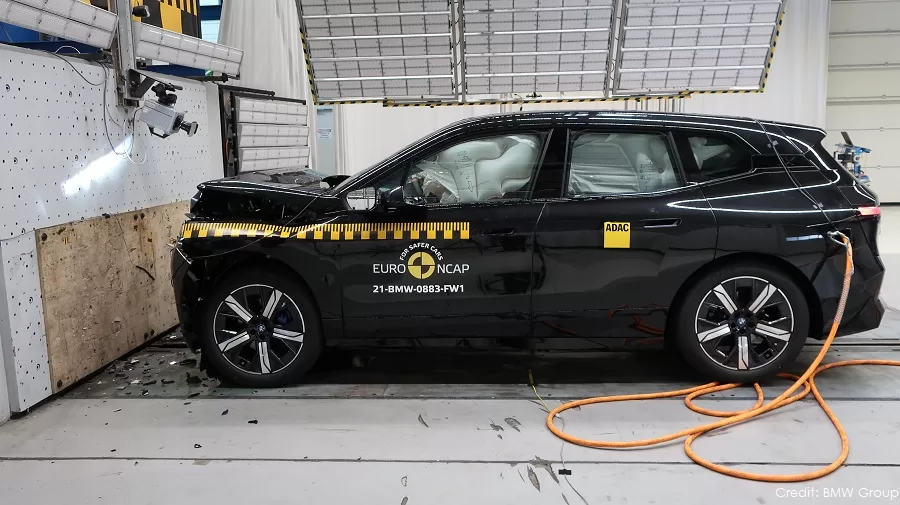Auto
The Rising Importance of Vehicle Safety: Unpacking the Shift in Car Buying Trends

- Vehicle safety has become the major factor for car buyers, exceeding traditional considerations such as performance and luxury amenities as a result of increased road safety awareness and sophisticated safety technologies.
- Over 75% of potential automobile purchasers now prioritise safety, thanks to regulatory improvements, the effect of safety ratings, and consumer evaluations and recommendations.
- As technology advances, technologies such as autonomous emergency braking and AI integration are projected to improve vehicle safety and shape the future of automobile buying.
In recent years, the car-buying environment has evolved considerably, with vehicle safety emerging as buyers’ top priority. This shift reflects a greater public awareness of road safety issues, aided by technical developments and increased media scrutiny of incidents and safety ratings. As drivers become more aware of the risks involved with car ownership, the value of safety features has grown, frequently outweighing conventional concerns like performance, luxury, and aesthetics.
Changing Priorities for Automobile Buyers
Historically, automobile consumers prioritised features such as performance, design, fuel efficiency, and the most recent technical breakthroughs. However, a noteworthy transformation is taking place. According to recent research, more than 75% of potential car purchasers increasingly prioritise safety. This change can be ascribed to several important influences:
Increased Awareness of Road Safety
Public awareness initiatives and substantial media coverage have highlighted alarming facts about vehicle accidents. In the United Kingdom alone, over 120,000 documented road traffic incidents occurred in 2022, highlighting the critical need for enhanced vehicle safety. Such worrisome figures inevitably raise customer concerns about the safety of the automobiles they choose.
Innovations in Safety Technology
Advancements in automobile technology have resulted in the implementation of advanced safety features. Today’s vehicles use a variety of modern safety technologies aimed to improve driver security, including:
- Adaptive Cruise Control (ACC): Adjusts the vehicle’s speed to keep a safe distance from the automobile in front, reducing the danger of collision.
- Automatic Emergency Braking (AEB) detects impending crashes and applies brakes automatically, thereby averting or reducing the severity of an accident.
- Lane Departure Warning (LDW): Notifies drivers when they accidentally drift out of their lane, which helps to reduce side-swipe accidents.
- Blind Spot Monitoring (BSM) uses sensors to detect vehicles in neighbouring lanes, allowing for safer lane changes.
These innovations not only enhance the driving experience but also provide peace of mind to safety-conscious consumers.
Regulatory Changes and Customer Expectations
Government restrictions on car safety have become more stringent. Initiatives such as the European New Car Assessment Programme (Euro NCAP) have implemented more stringent testing standards, requiring manufacturers to prioritise safety in vehicle design. As consumers become more aware of these safety ratings, many use them as their major decision-making tool when purchasing a vehicle.
The Impact of Insurance Rates
The link between car safety and insurance costs has a substantial impact on customer priorities. Insurers frequently give cheaper premiums for automobiles with improved safety features, encouraging buyers to prioritise safety in their purchasing decisions. For example, vehicles with high Euro NCAP ratings may be eligible for lower insurance rates, making them more financially enticing to customers.
Power of Consumer Reviews and Recommendations
In today’s digital age, user reviews and suggestions have a big impact on purchasing decisions. Platforms such as social media, automotive review sites, and online forums make it easy for potential buyers to learn about vehicle safety. Personal testimonials about safety performance can have a significant impact on consumer perceptions and decisions, prompting consumers to examine the safety histories of certain vehicle models.
A Transition Towards Family-Friendly Vehicles
Families have always been a significant part of the car-buying industry, with a strong emphasis on safety. As family dynamics change, the need for vehicles with advanced safety features has increased. Features like rear-seat reminders, kid safety locks, and multiple airbags are becoming increasingly important for parents. According to research, parents with children at home are 85% more inclined to choose a vehicle based on its safety ratings rather than other aspects.
The Future of Vehicle Safety
Looking ahead, the trend of putting vehicle safety first is likely to dominate the automotive industry for years to come. Here are some potential developments:
Integration of Artificial Intelligence
The inclusion of artificial intelligence (AI) into automotive systems is expected to transform safety aspects. AI can improve driver assistance systems by learning from real-time driving circumstances and making quick decisions to prevent accidents. Predictive collision avoidance and sophisticated adaptive systems are on the horizon, with the potential to make vehicles safer than ever.
The Rise of Electric and Autonomous Vehicles
The growing popularity of electric and self-driving vehicles (AVs) is also changing safety considerations. Electric vehicles often provide improved safety features as standard, which appeals to safety-conscious consumers. Furthermore, AVs are intended to eliminate human error—one of the primary causes of accidents—potentially making roadways safer overall.
Continued Emphasis On Safety Testing
As consumer demand for safer automobiles grows, manufacturers must increase their investments in safety testing and technological development. Continuous advancements in crash testing procedures, including the examination of new safety technology, will allow customers to make informed decisions based on accurate data.
In summary, vehicle safety has emerged as the most important issue for consumers when purchasing a car. This transition has been influenced by factors such as growing awareness of road safety, technical developments, regulatory changes, and consumer reviews. As purchasers prioritise safety features, the automobile industry must adapt to meet these evolving needs, resulting in a future in which safer vehicles become the standard. This shift benefits individual consumers while also creating a safer driving environment for everyone on the road.
With the increased emphasis on safety, prospective automobile buyers are encouraged to perform extensive research and prioritise vehicles with the most recent safety features and high safety ratings. As technology advances, we aspire for a future in which road safety remains a top priority, making every journey as safe as possible.


















































